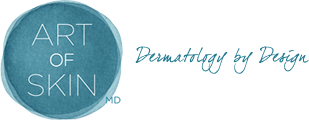Unwanted Hair & Excess Sweating
Dr. Melanie Palm is a nationally recognized dermatologist and cosmetic surgeon specializing in the treatment of unwanted hair and excess sweating called hyperhidrosis. Her offices are located in Solana Beach, CA just north of San Diego. Dr. Palm lectures nationally on laser and device technology for the body. She offers many effective treatment options for laser hair removal and hyperhidrosis.
Unwanted Hair & Laser Hair Removal
Unwanted hair is a common complaint among patients seeking aesthetic treatments at dermatology offices. Following puberty, terminal hairs (a term for darker, thicker hairs) are stimulated under hormonal influences in predictable patterns on the body including the underarm and bathing suit region.
Whether due to genetics and familial tendencies, hormonal influences, or normal development, multiple areas of the face or body may produce unwanted hair. In some cases, this hair may become problematic. On the face, coarse hair may become ingrown, inflaming the skin and causing a condition called pseudofollliculitis barbae. In the groin and bathing suit area, a similar process can lead to ingrown hair bumps and at worst scarring.
Laser hair reduction can remove unwanted hair and improve symptoms related to ingrown hairs. The following areas of the face and body can be treated:
- Face:
- Upper lip
- Chin and jawline
- Cheeks and beard area
- Ears
- Body:
- Underarms or armpits
- Bikini area and buttocks
- Legs
- Arms
- Back
- Chest
- Abdomen & “happy trail”
- Knuckles on hands and feet


Treatment with Laser Hair Removal
Laser hair removal is a more permanent means of hair reduction. It relies on a scientific theory called “selective photothermolysis.” Laser hair removal devices use an appropriate wavelength that targets the pigment called melanin in dark-colored brown or black hairs. The laser energy selectively heats the target hair, and the heat injury destroys the hair follicle and its associated stem cells, causing permanent removal of the treated hair.
Laser hair removal is always completed as a series of treatments. It typically takes 4-6 treatments to reduce hair counts in an area significantly. Treatments are typically spaced 4-8 weeks apart, and occasional periodic maintenance may be necessary for some patients.
Good candidates for laser hair removal have the following:
- Typically lighter skin types with darker hair
- Untanned skin
- No active infection or inflammation in the treatment area
- Currently shaves hair in desired area of laser hair removal
- Understanding that this is a process and not a one-time treatment
Who is not a good candidate for laser hair removal? Here is a brief list:
- Those with blond, red, white, or grey hair
- Darker skin types with finer hair on the face – treatment in these patients sometimes results in paradoxical hypertrichosis – meaning darker and more coarse hair grows near the treatment site of laser hair removal
- Those with unrealistic expectations
- History of scarring or abnormal healing or history of light-sensitive skin reactions
- Plucks, waxes, or threads the hair in the treatment area
The type of laser used during laser hair removal matters. At Art of Skin MD, we use the Lutronic Advantage device. It has the following features:
- Fast: able to treat a whole back in about 7 minutes
- Cooling: the treatment tip is large and pre-cools skin making treatment more comfortable
- Reliable: as a diode laser, it is the most studied and tried-and-true laser platform studied in laser hair removal. It has the safest and most comfortable laser wavelength on the widest variety of skin types
Our clinic is focused on patient comfort. For this reason, we provide topical numbing, cooling, ice packs, and post-treatment care for our laser hair removal patients.
Excessive Sweating - Hyperhidrosis
Excessive sweating is a frustrating and embarrassing problem. Some individuals may sweat profusely in stressful situations, while others may suffer from continual sweating from the underarms, hands, and feet without provocation. In these cases, beads of sweat are often seen in the areas, dripping off the skin, and affecting or staining clothing and accessories.
The medical term for excessive sweating is called hyperhidrosis. There are three major categories typically treated by the dermatologist:
- Underarm or armpit: Axillary hyperhidrosis
- Palms of hands: Palmar hyperhidrosis
- Soles of feet: Plantar hyperhidrosis
Other cases of localized excessive sweating exist. A syndrome called Frey’s syndrome results in excessive sweating of the face while eating. Some patients may sweat excessively on the face, head, or neck. Some of these cases, as well as more classic forms of axillary hyperhidrosis, can be managed with treatment.
Extreme cases of sweating should be evaluated by a qualified health professional. Occasionally, other systemic causes (e.g. thyroid disorders, hormonal imbalances or tumors, cancer) may cause symptoms mimicking hyperhidrosis and should be treated.
For straightforward cases of hyperhidrosis, several options for successful treatment of excess sweating area available to patients from over-the-counter topical medications to minimally invasive surgery.
Treatment for Axillary, Palmar, and Plantar Hyperhidrosis
The following treatments are typically offered in order as outlined below to control or definitively treat excessive sweating called hyperhidrosis:
- Medical therapy: topical preparations are commonly used over-the-counter or by prescription to treat excessive sweating prior to injection treatments or procedures. Clinical strength anti-perspirants and a prescription called Drysol offer 21% aluminum chloride to reduce excess sweat production. They are used habitually to maintain their effect.
- Botox: Botox, Dysport, and Xeomin are all FDA-approved botulinum toxins that relax overactive muscles and improve wrinkles. Botox Cosmetic is also FDA-approved for hyperhidrosis. Typically 1 vial (100 units) of Botox is used to treat either the underarms (axillary hyperhidrosis), palms of hands (palmar hyperhidrosis), or feet (plantar hyperhidrosis). While Botox treatment on the face lasts about 3 months, results for hyperhidrosis often last longer, approximately 4-6 months for most patients. To increase patient comfort during the procedure, we offer topical numbing, ice, and forced air cooling for all patients undergoing Botox treatment for hyperhidrosis.
- Lasers , Lights, and Devices:
- Accusculpt: Accusculpt is a laser liposuction device that is very specific to treating fat and collagen in the deeper layers of the skin. It can be used in in hyperhidrosis to heat and damage sweat glands within the skin, treating the root cause of excessive sweating.
- Miradry: This microwave-based device heats and destroys sweat glands and is FDA-approved for hyperhidrosis. It is usually offered as a single or two treatment therapy. As we offer Accusculpt for hyperhidrosis with effective results, Art of Skin MD does not specifically use this device for hyperhidrosis.
- Surgery:
- Liposuction: Liposuction, whether combined with laser liposuction using Accusculpt or not, can curtail excess sweating of the armpits called axillary hyperhidrosis. This works through removing and damaging sweat glands in the underarm called eccrine glands. The results are typically long-lasting.
- Sympathectomy: thoracic endoscopic sympathectomy is performed by a thoracic surgeon and is usually a last resort option for severe hyperhidrosis. This procedure is performed in an operating room setting and the spinal cord nerves that signal to sweat glands to produce sweat are cut. This procedure can produce compensatory hyperhidrosis (excess sweating on other areas of the body) and rarely patients may have other complications from surgery.
A stepwise approach is often indicated to improve the symptoms from excessive sweating or unwanted hair. Non-invasive and minimally invasive techniques are often used at Art of Skin MD to achieve the goals of our patients in regards to laser hair removal and hyperhidrosis of the underarms, hands, and feet.
If you are interested in learning more about laser hair removal, or would like to set up a consultation, call Dr. Melanie Palm at 858.792.SKIN (7546) to schedule your appointment.

